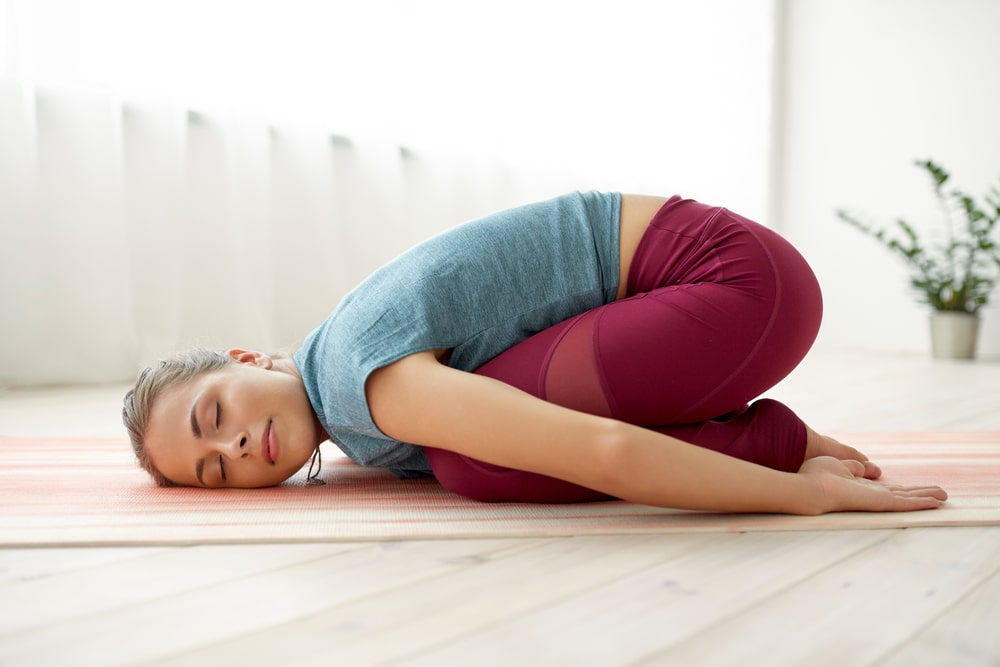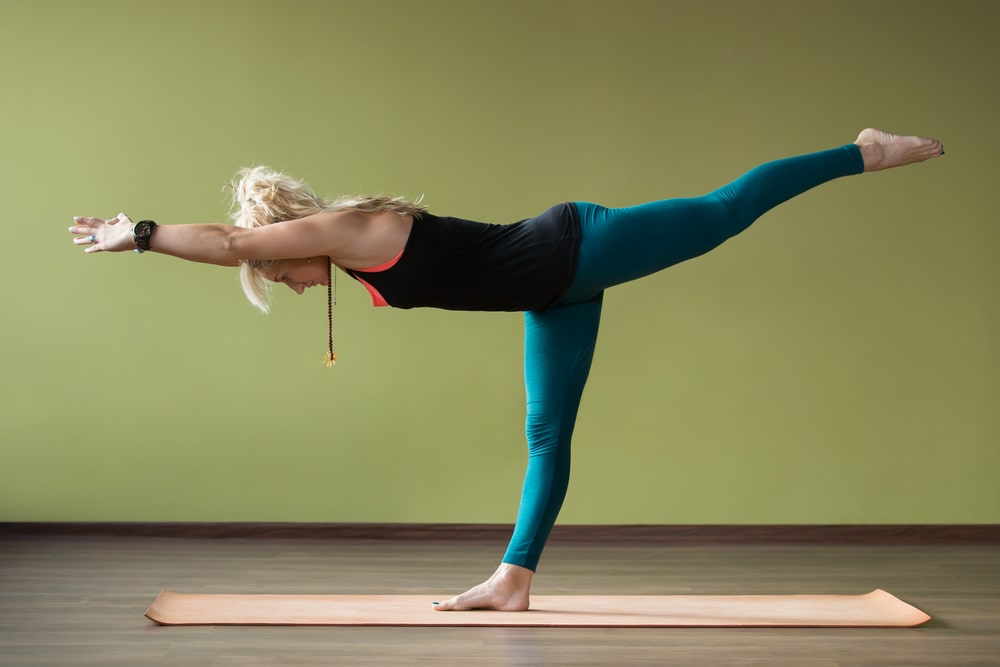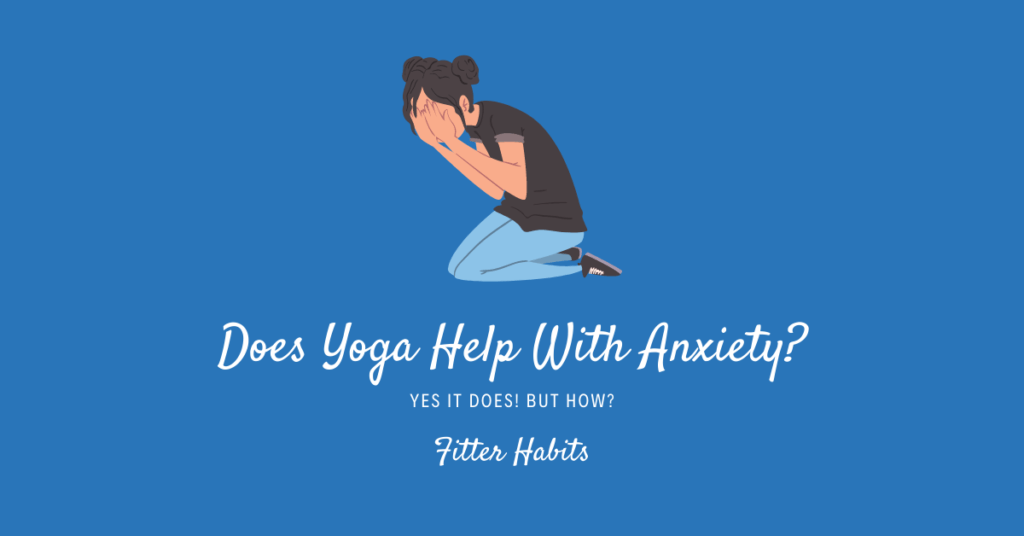We’ve all experienced the racing heart, sweaty palms, and butterflies in the stomach that accompany anxiety.
Whether you were nervous about a situation or suffer from an anxiety disorder, yoga is proven to help with stress reduction and anxiety. Incredibly, yoga practice offers other health benefits too. In this article we explore the topic and ask ‘how does yoga help with anxiety‘.
Contents
What Is Anxiety?
Anxiety is the body’s reaction to stress. We all feel anxiety at one time or another. However, an anxiety disorder or panic disorder goes well beyond feeling a bit nervous and sweaty. Anxiety is a challenge people struggle to manage in their everyday lives.
Anxiety can be all-consuming and debilitating as some people struggle to conduct “normal” daily activities like working, shopping, and even going outside. Anxiety is the inability to control your worries and fears.
Even small things like a change in plans can become overwhelming. Not being able to control worrying can, among other things, cause terrifying panic attacks. If you experience these anxiety attacks, you know how it feels when you can’t breathe, and your heart rate shoots up. These symptoms can make you feel like you’re dying.
Anxiety can be an indicator of other mental health conditions and often goes hand-in-hand with depression, but generalized anxiety disorder is an illness on its own. Did you know that anxiety also has physical symptoms?
Many people don’t know anxiety can increase your heart rate and blood pressure and cause sweating, particularly during a panic attack. Long term, these responses can cause muscle pain, headaches, and nausea.
How Does Yoga Help With Anxiety?
The practice of yoga can help manage anxiety in several different ways. Meditation and deep breathing keep you calm and lower your heart rate, helping with your stress management.
Research the type of yoga that is best for you, but hatha yoga is a general term for yoga that incorporates yoga poses and controlled breathing. Both of these practices improve the mind through focus and relaxation.
Exercising in yoga sessions releases those all-important endorphins, so scientifically, regularly practicing yoga poses make you happier!
Four Ways Yoga Can Help With Anxiety
1. Meditation
Some people disregard meditation, but yoga classes are heavily focused on meditation, as it can bridge the gap between the body and mind.
Meditation generally involves focusing on a thought, sound, or movement and not thinking about anything else. Your attention to focus calms your mind and helps you release all other thoughts. You become more aware of your body, your emotions, and the things going on around you. This is called mindfulness.
Mindfulness is the form of meditation practiced in yoga. It helps you control your emotions and can bring to mind solutions you couldn’t think of before.
Meditation is an invaluable tool and coping mechanism for those suffering from anxiety.
It can help you calm yourself in the middle of a panic attack or manage day-to-day anxiety symptoms. This relaxation technique is proven to work.
2. Breathing
I know you’ve been breathing your whole life, but in yoga, proper breath control is called pranayama. Learning to control the speed and focus of your breath is effective in managing anxiety.
Deep breathing and meditation are complementary practices. Meditation keeps you focused on the present moment, while deep breathing helps you control your thoughts. Breathing deeply lowers your heart rate and blood pressure, calms you, and keeps you grounded.
When you’re nervous or panicking, you tend to take short, shallow breaths, which can make you feel light-headed and unfocused. Deep breathing sends more oxygen to your brain and allows you to regain focus.
Deep breathing is also used to control anger, frustration, and pain and has been practiced for thousands of years.
Remember when an adult told you to close your eyes and count to ten or take three deep breaths? Embracing these breathing exercises and focusing helps you control your emotions.
3. Poses
Among the 84 yoga poses or asanas, some are more useful in reducing anxiety. Three, in particular, are incredibly calming.
i. Child’s Pose

Child’s pose, also called the resting pose, is perfect when you need a break. This asana stretches several muscle groups that can feel tight when you’re anxious. Child’s pose relieves tension in the back, neck, and shoulders.
ii. Tree Pose

Tree pose needs more practice, as you must remain upright and balanced. Successfully executing this pose requires concentration, so it forces you to redirect your thoughts away from your stress and focus on staying upright and centred.
iii. Warrior III

You must focus and use your strength to achieve Warrior III. Only attempt this pose after you’re comfortable with tree pose, as you will need all of your concentration skills.
4. Other Benefits
As much as yoga helps reduce anxiety, attending a class isn’t just about meditation, deep breathing, and poses. Getting out of the house is a considerable achievement if your anxiety is debilitating. Besides, exercise releases endorphins, which are proven to help reduce stress and improve mood.
The benefits of yoga also include getting fit. Yoga tones the body and can contribute to weight loss, but countless people feel anxious and insecure about the way they look. Below you can see how participating in a yoga program could help reduce stress when you look in the mirror or go outside as well as improving your overall wellbeing.
- Practicing one or more types of yoga can relieve muscle pain associated with carrying anxiety in your body.
- The endorphins released and your focus on poses can improve your mood.
- You can achieve physiologically changes as, with regular yoga practice, you will stand straighter. This physical change makes you look and feel more confident.
- You continue to build confidence with each pose you master.
To improve your overall wellbeing, talk with your yoga instructor to get specific advice on reaching your physical and mental health goals. Tell him or her that you want help in managing or overcoming your anxiety.
The Final Word On: Does Yoga Help With Anxiety?
To help manage anxiety, you can choose among many medications and traditional talk therapies proven to help. You can practice yoga alongside these conventional treatments, and it’s definitely worth trying.
If you’re not ready to go out and take a class with other people, find an online yoga class you can practice in your living room. Start at home, and when you’re ready, you can attend a class in a yoga studio. Trained yoga instructors can help you master poses and teach you breathing techniques.
Yoga offers many physical and mental benefits. Join a yoga program and see for yourself!



